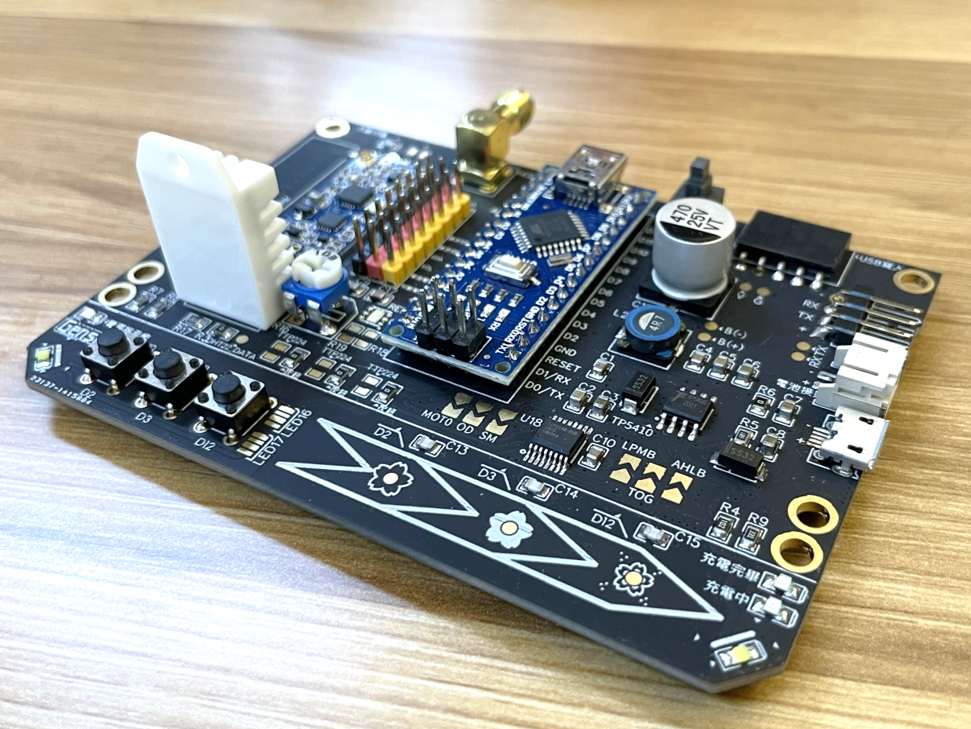
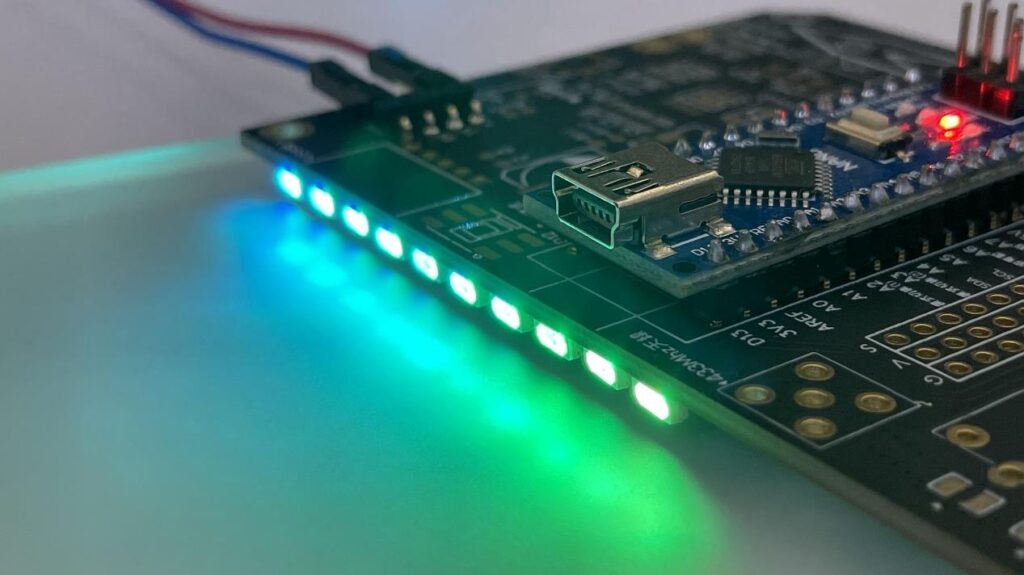
Concept
互動作品的設計,會需要使用到通訊溝通的功能,但因有線通訊需仰賴線段的長度,這會對使用場域產生限制,因此無線通訊可以打破對於使用場域的限制。
電路上需要使用無線晶片,經常會想到使用無線晶片,目前主流是使用的無線模組多為藍芽晶片、 wifi晶片、 RF晶片。其中藍芽與wifi會需要進行配對設定,配對完畢後才能正常溝通,但是RF晶片廣播就不需要進行配對就可以進行廣播溝通,並且相較於藍芽或是wifi而言,更能達到遠距離通訊的功能 。
為了達到遠距離廣播通訊的功能,需要的完成各模組的接線溝通,經常會導致接線雜亂複雜且要求的技術難度高,為了使無線廣播通訊系統可以模組系統化與人機觸控介面的結合,因此設計一塊包含無線廣播通訊、人機介面、I/O擴充、溫溼度感測、電池管理功能的系統整合板
The design of interactive works will require the use of communication functions, but because wired communication depends on the length of the line segment, this will limit the field of use, so wireless communication can break the restrictions on the field of use.
The circuit needs to use a wireless chip, and it is often thought of using a wireless chip. At present, the mainstream wireless modules used are mostly bluetooth chips, wifi chips, and RF chips. Among them, bluetooth and wifi will need to be paired and set, and can communicate normally after pairing is completed, but RF chip broadcast can broadcast and communicate without pairing, and compared with bluetooth or wifi, it can achieve long-distance communication function.
In order to achieve the function of long-distance broadcast communication, it is necessary to complete the wiring communication of each module, which often leads to messy and complicated wiring and requires high technical difficulty. In order to make the wireless broadcast communication system modular and human-machine touch interface Therefore, design a system integration board including wireless broadcast communication, human-machine interface, I/O expansion, temperature and humidity sensing, and battery management functions
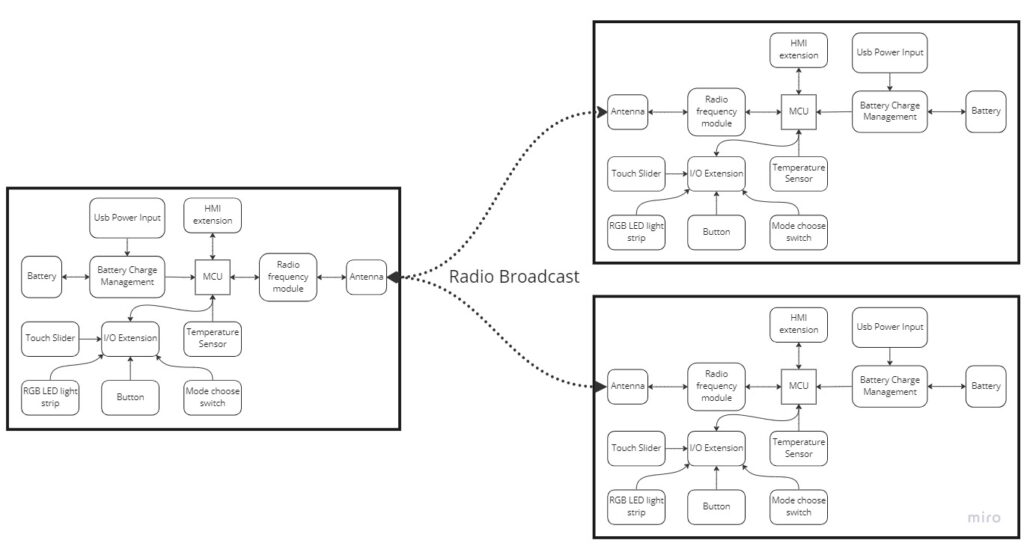
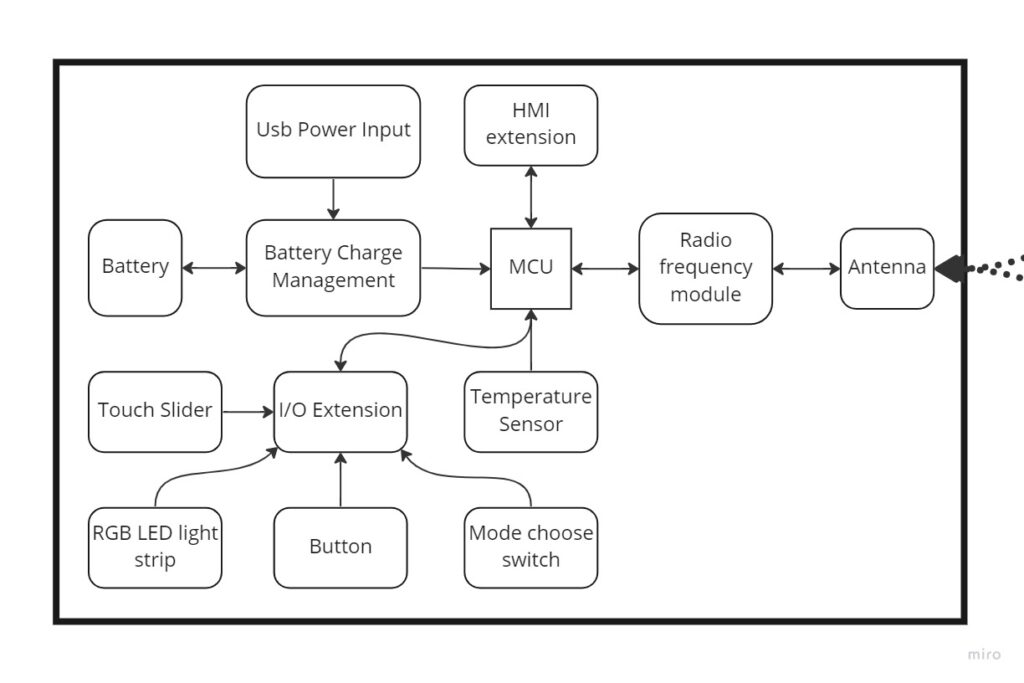
Tech specs
需要將多功能結合在一塊PCB系統板,需要有一個中央處理晶片,處理與溝通控制各模組的功能,這裡使用Arduino進行各模組之間的溝通,與無線廣播模組、I/O擴充、感測器模組、RGB LED strip、HMI擴充進行溝通整合。並且為了使HMI可以直接與系統板以銅柱結合,因此將系統板設計的與HMI大小相同且開孔相同,以利於HMI可以直接組裝在系統板上。
It is necessary to combine multiple functions into one PCB system board, and a central processing chip is required to process and communicate with the functions of each module. Here, Arduino is used for communication between modules, and wireless broadcast module and I/O expansion. , sensor module, RGB LED strip, and HMI expansion for communication and integration. And in order to make the HMI can be directly combined with the system board with copper pillars, the system board is designed to have the same size and the same hole as the HMI, so that the HMI can be directly assembled on the system board.
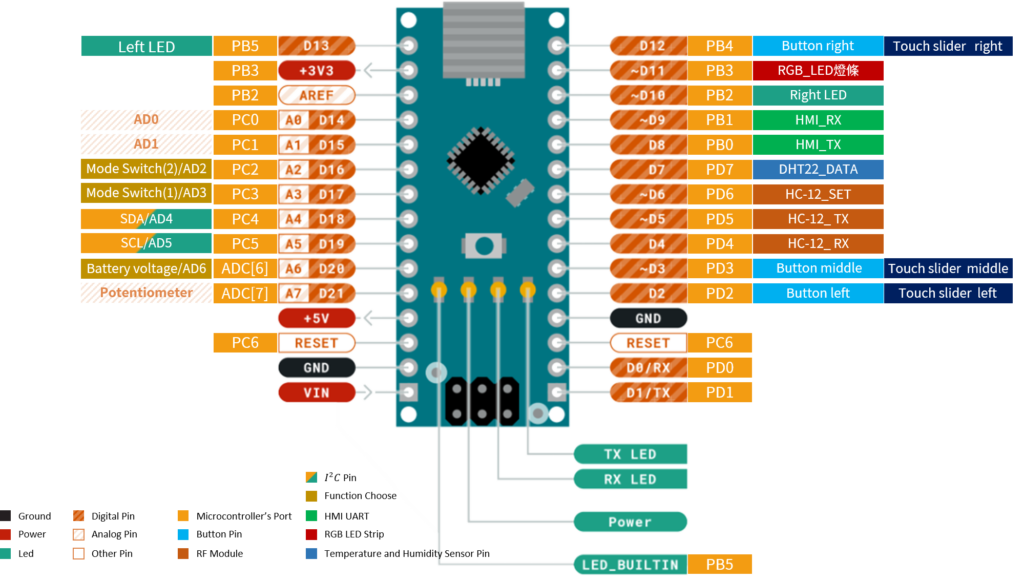



Mode Change Design
Arduino nano的腳位並不夠連接所有的模組,達到整體彙整為一塊系統板的功能,因此將相似的功能利用0歐姆電阻作為切換。
無線廣播通訊模組,須利用天線使通訊距離增加,為了使用方便設計PCB天線與外擴天線並且以0歐姆電阻作為切換。
利用切換開關的設計,方便切換系統模式或是開機模式。
The pins of Arduino nano are not enough to connect all the modules to achieve the function of integrated into one system board, so similar functions are switched with 0 ohm resistors.
The wireless broadcast communication module must use the antenna to increase the communication distance. For the convenience of use, the PCB antenna and the external expansion antenna are designed and switched with a 0 ohm resistor.
Using the design of the toggle switch, it is convenient to switch between the system mode and the boot mode.



I/O and Temperature Sensor Extension
- 系統板提供8pin的I/O pin 方便外擴使用。
- 內建可變電阻方便微調與控制。
- 內建溫溼度感測器使系統板環境感測功能。
- The system board provides 8pin I/O pins for external expansion.
- The built-in variable resistor is convenient for fine-tuning and control.
- The built-in temperature and humidity sensor enables the system board environment sensing function.

Battrey Charge Management
為了達到無線移動的裝置設計,電池是必要的,系統板使用鋰電池作為電源的輸入,並且利用電池管理晶片並且達到USB充電且同時使用USB電源的對系統板的供電,並且電源管理晶片有充電指示燈,確認充電狀況
In order to achieve wireless mobile device design, the battery is necessary, the system board uses a lithium battery as the input of the power supply, and uses the battery management chip to achieve USB charging and at the same time use the USB power supply to the system board, and the power management chip has charging Indicator light to confirm the charging status


Human Machine Interface Extension
系統板與人機介面是利用USART通訊與燒錄,在系統板中有USART的擴充接點,並且開孔位置與人機介面相同,因此可以直接與系統板連結擴充。
利用USB to TTL 模組與系統板連結,可直接對人機介面燒入。
最終畫面人機介面展示,利用無線廣播模組接收其他系統板所感測的溫溼度資訊,並且以圖像化方式顯示。
畫面下方顯示接受字串,並且包含CRC驗證資料。
The system board and the human-machine interface use USART to communicate and program. There are USART expansion pins in the system board, and the hole position is the same as that of the human-machine interface, so it can be directly connected to the system board for expansion.
Use the USB to TTL module to connect with the system board, which can be directly burned into the human-machine interface.
The human-machine interface display on the final screen uses the wireless broadcast module to receive the temperature and humidity information sensed by other system boards and displays them graphically.
The acceptance string is displayed at the bottom of the screen and contains CRC verification data.
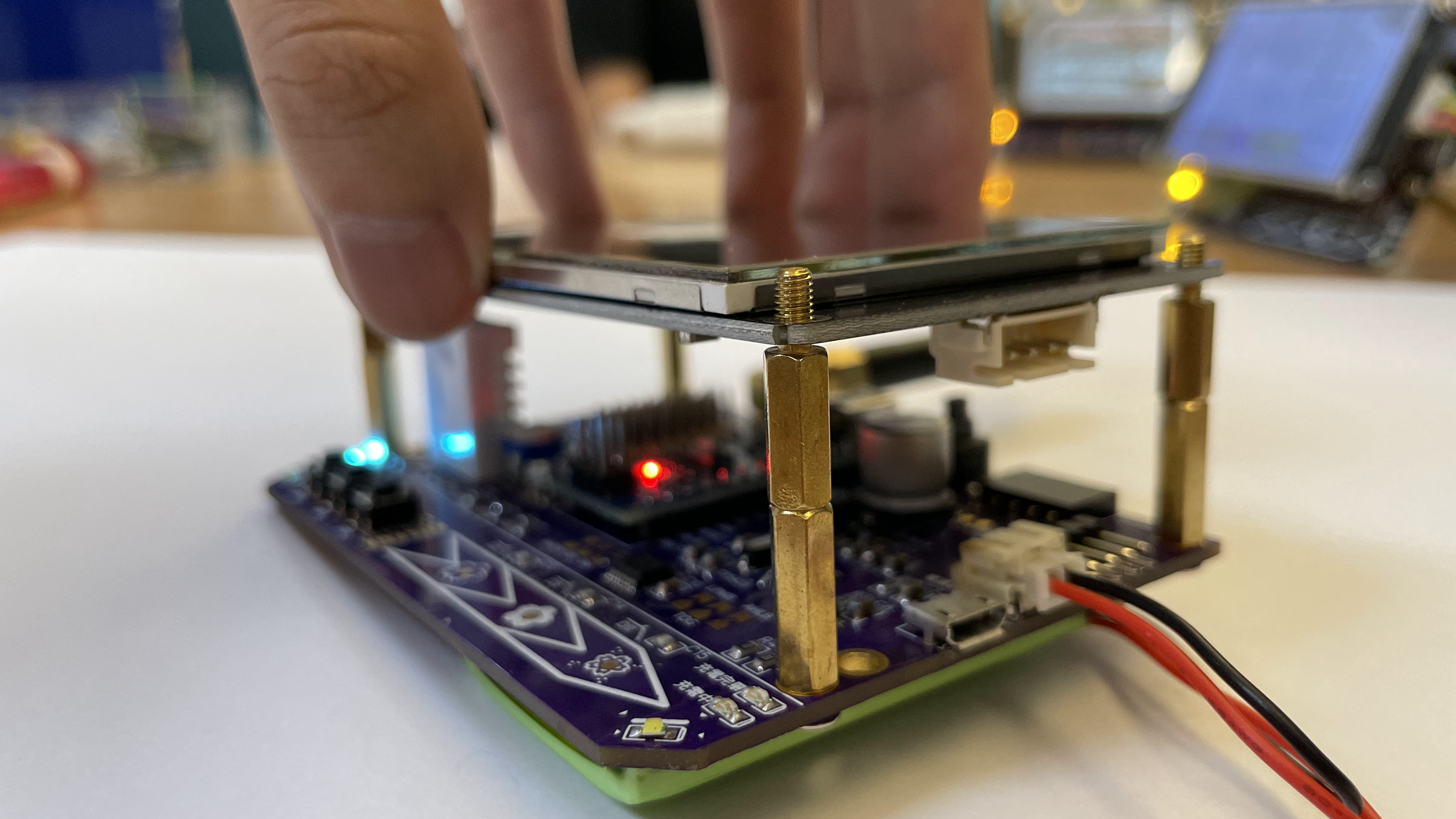


RGB LED light strip
內建的RGB LED 燈條 ,可以利用字串控制的方式,驅動特定顆數RGB LED亮起特定的顏色。
The built-in RGB LED strip can use Data control to drive a specific number of RGB LEDs to light up a specific color.
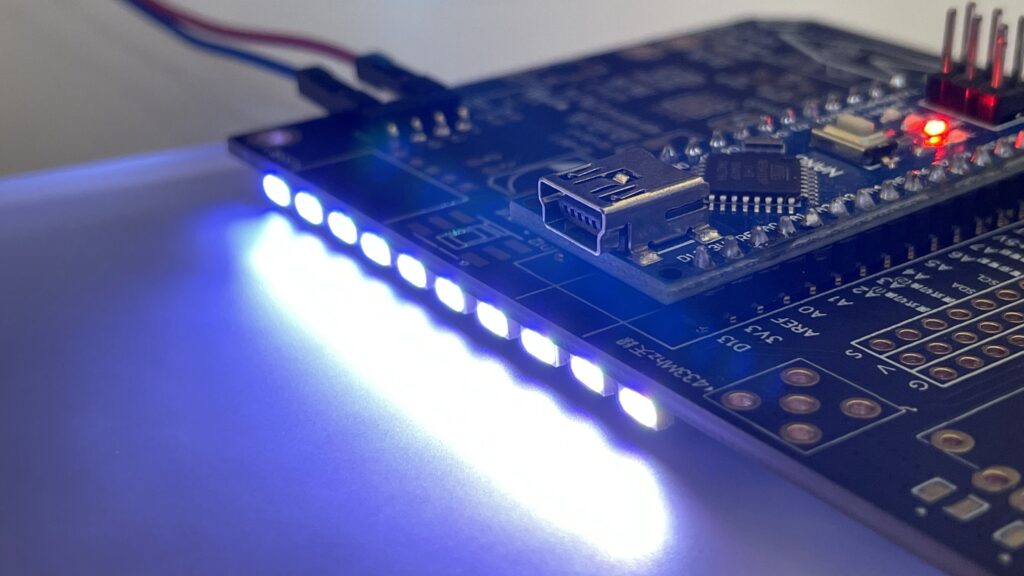
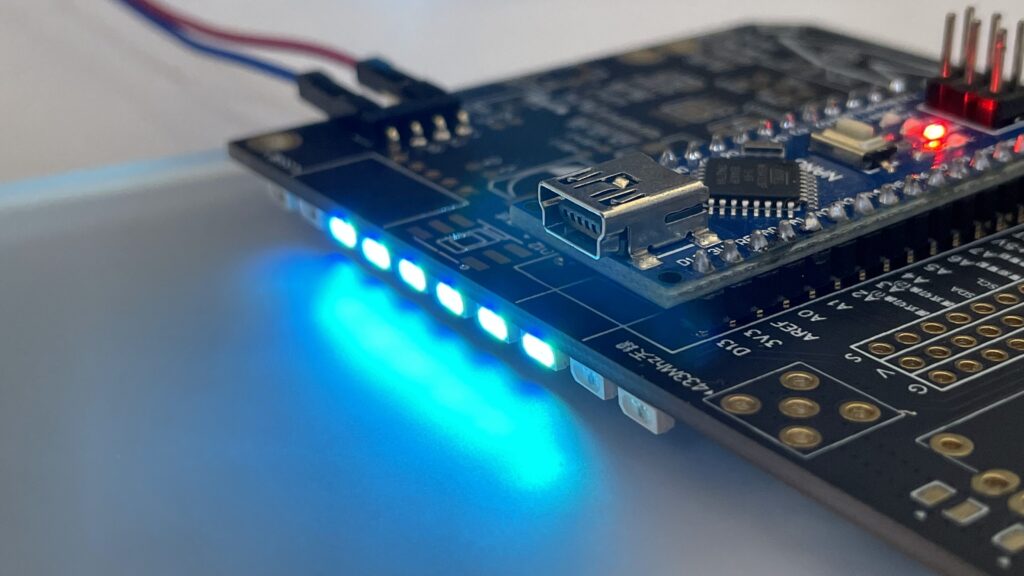
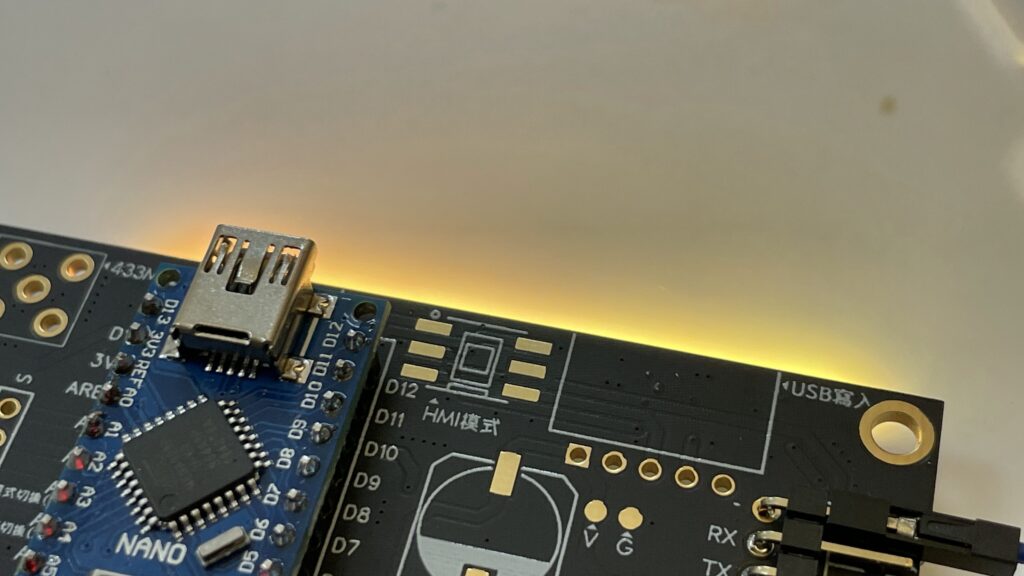

Small Batch Production
- 利用網版印刷方式,將錫膏印刷至PCB板上
- 並且放置SMD元件至系統板上
- 熱板加熱使錫膏融化將SMD元件焊接固定
- 焊接DIP元件
- 最終以探針供應電源,檢查系統板是否正常運作
- Use screen printing to print solder paste onto the PCB
- And place SMD components on the system board
- The hot plate is heated to melt the solder paste to solder and fix the SMD components
- Soldering DIP components
- Finally, supply power with a probe to check whether the system board is functioning normally

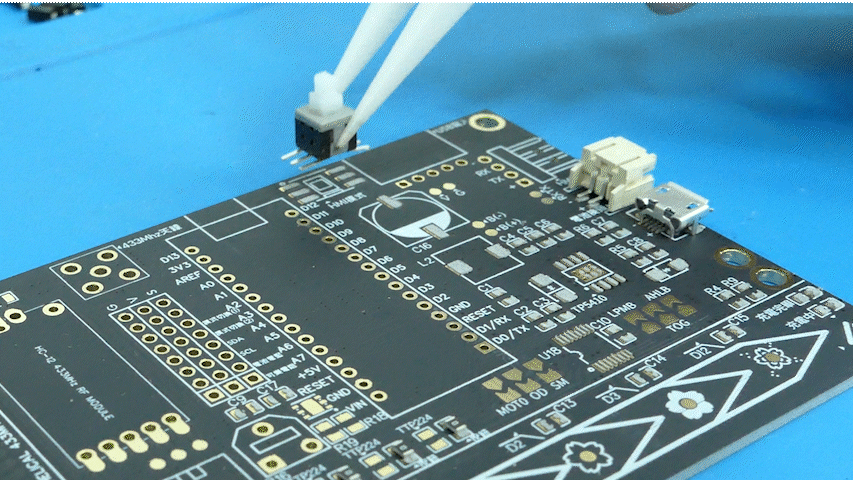
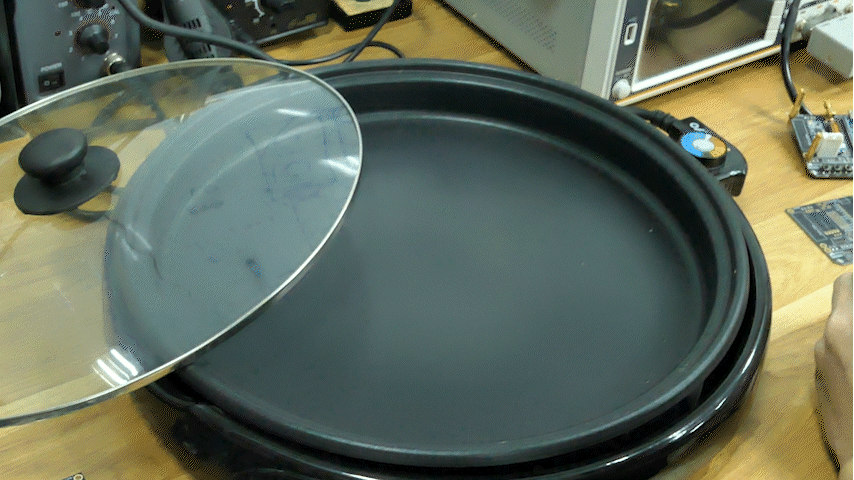
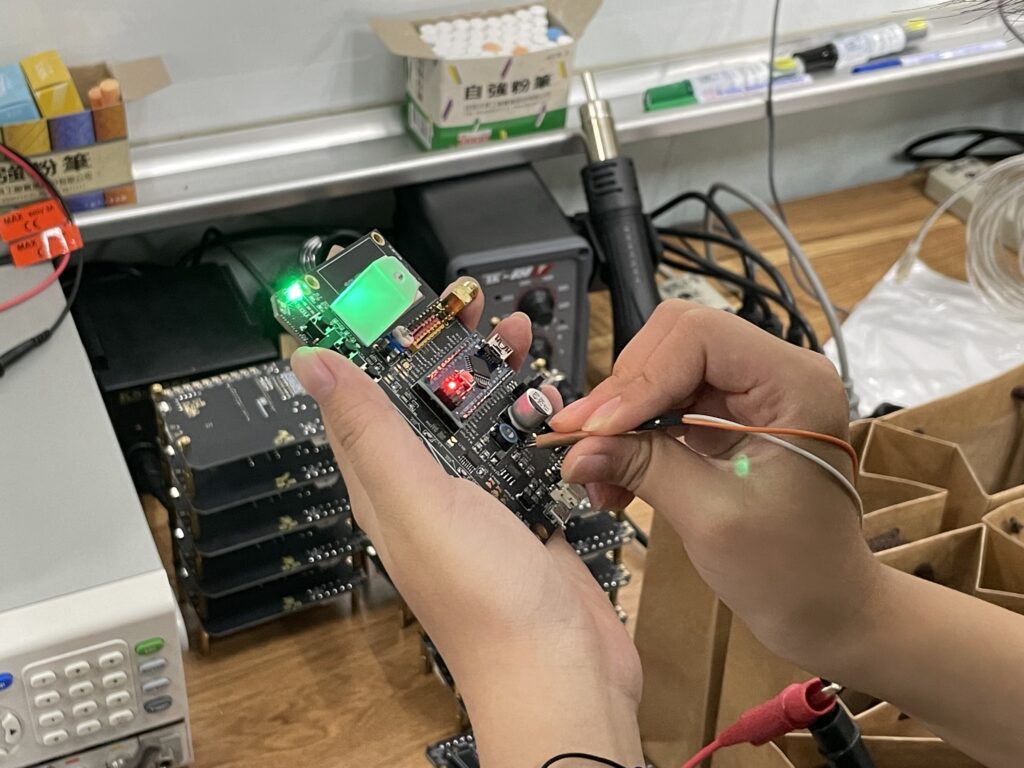
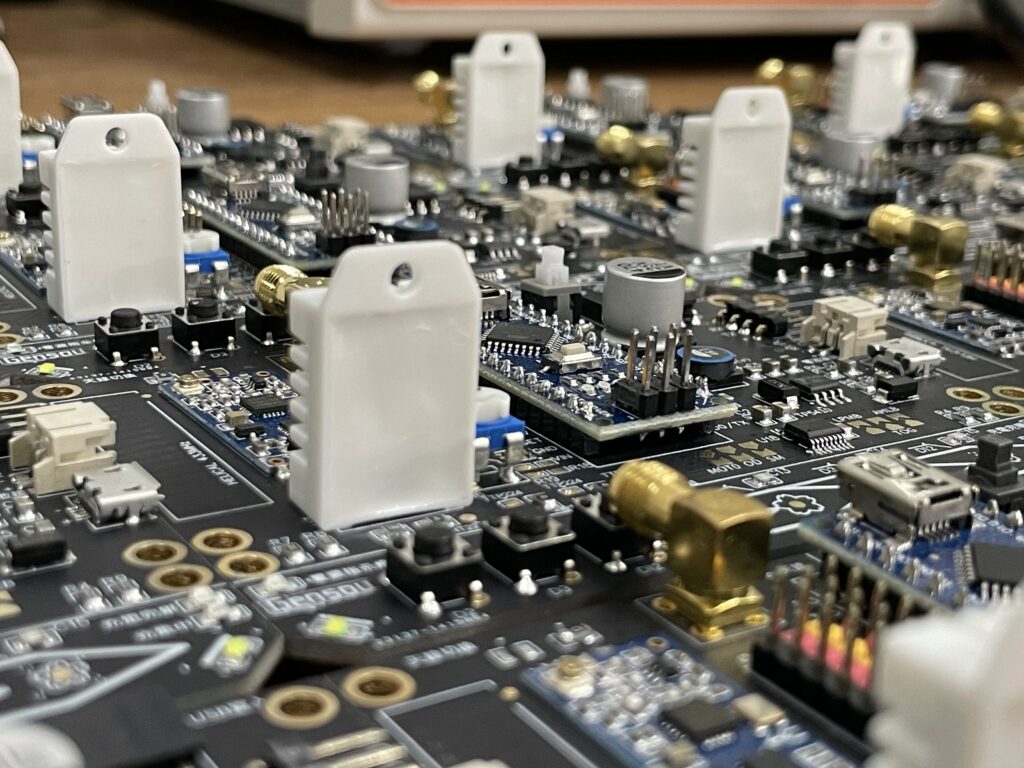
Use this Board to Finish Project
在作品集內有其他應用這塊系統板的應用專題。
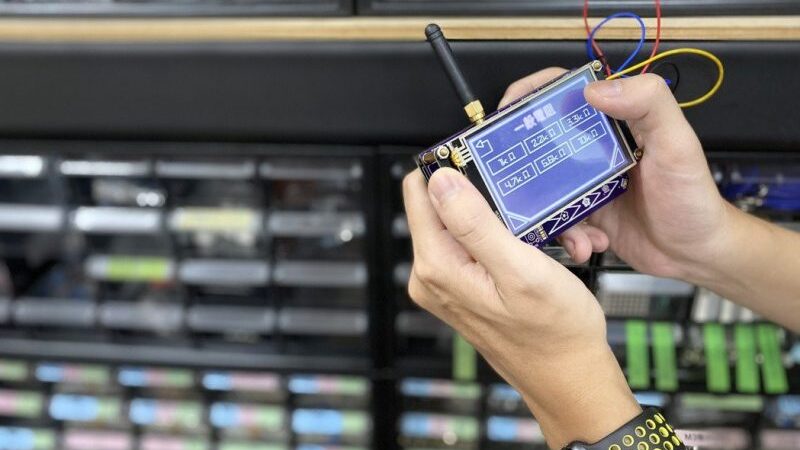
IOT component storage search system
利用無線廣播方式,同時搜尋特定零件在置物櫃的位置,並且以RGB LED燈條顯示零件位置。
Use the wireless broadcasting method to search for the location of specific parts in the locker at the same time, and display the location of the parts with RGB LED light strip.
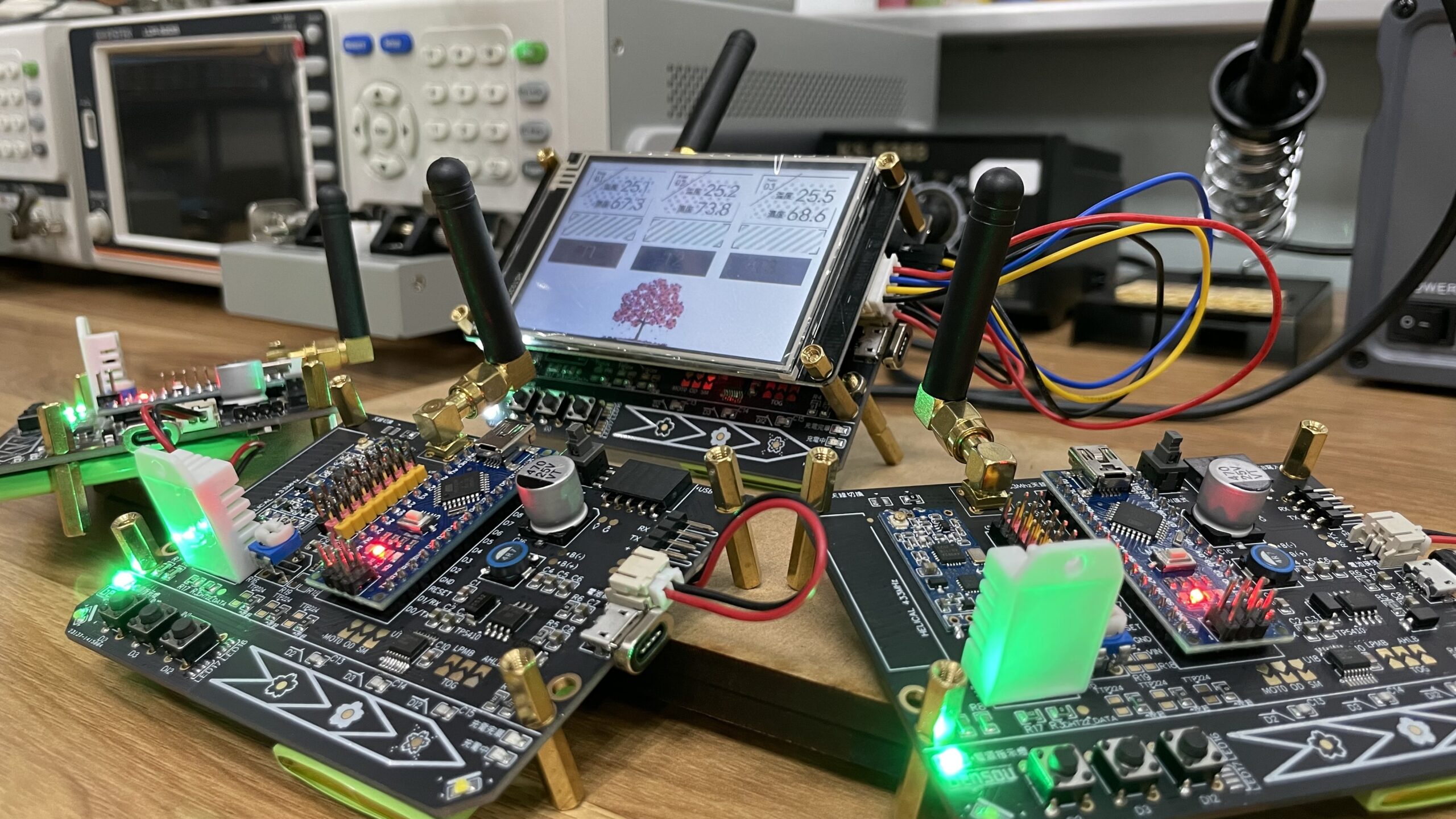
Temperature and Humidity Sensor System
利用無線廣播方式,接收來自三塊系統版上的溫溼度感測資料,並且顯示在HMI上。通過HMI操作可以指定控制特定一塊系統版上的輸出功能。
Use wireless broadcasting to receive temperature and humidity sensing data from the three system boards and display them on the HMI. Through the HMI operation, the output function on a specific system board can be designated to be controlled.

Split Flap Display
利用無線廣播方式,控制翻頁顯示器顯示特定英文或數字的頁數。利用噴漆方式實現了頁面客製化。
Use wireless broadcasting to control the split flap display to display the number of pages in specific English or numbers.
Page customization is realized by spray painting.
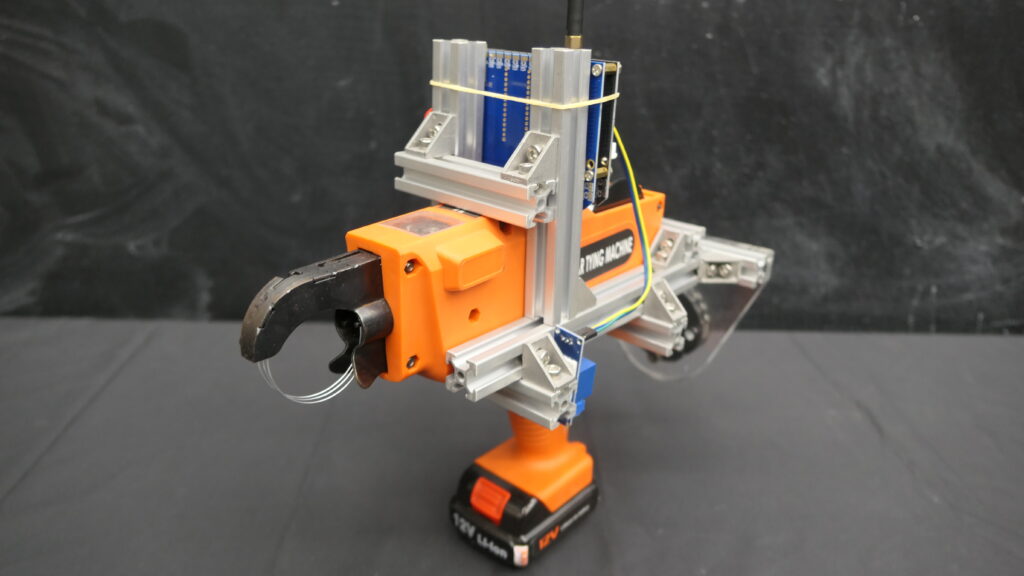
Node Locker
利用無線廣播方式,設計機械手臂與工具頭的物聯網環境。以機械手臂或是HMI發送無線廣播命令控制工具頭實現特定功能。
Using wireless broadcasting, design the IoT environment of the robotic arm and tool head. Use the robotic arm or HMI to send wireless broadcast commands to control the tool head to achieve specific functions.
1 comment
I’m not positive where you are getting your info, however
good topic. I must spend some time studying
more or working out more. Thanks for excellent info I was
on the lookout for this information for my mission.